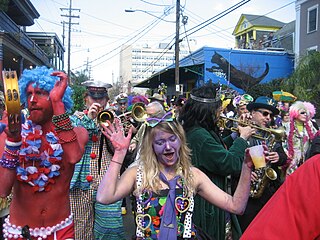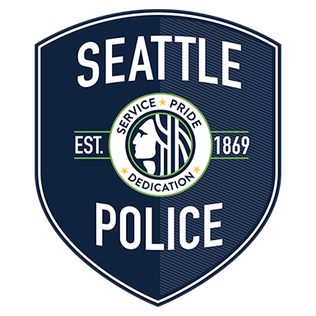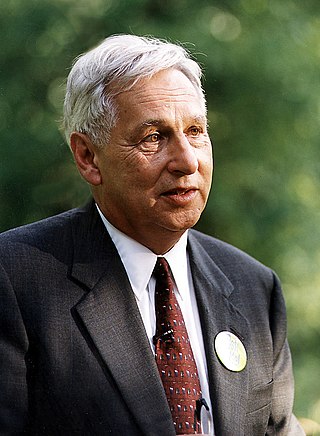
Mardi Gras refers to events of the Carnival celebration, beginning on or after the Christian feasts of the Epiphany and culminating on the day before Ash Wednesday, which is known as Shrove Tuesday. Mardi Gras is French for "Fat Tuesday", reflecting the practice of the last night of eating rich, fatty foods before the ritual Lenten sacrifices and fasting of the Lenten season.

The Sydney Gay and Lesbian Mardi Gras or Sydney Mardi Gras is an event in Sydney, New South Wales attended by hundreds of thousands of people from around Australia and overseas. One of the largest such festivals in the world, Mardi Gras is the largest Pride event in Oceania. It includes a variety of events such as the Sydney Mardi Gras Parade and Party, Bondi Beach Drag Races, Harbour Party, the academic discussion panel Queer Thinking, Mardi Gras Film Festival, as well as Fair Day, which attracts 70,000 people to Victoria Park, Sydney.

The holiday of Mardi Gras is celebrated in southern Louisiana, including the city of New Orleans. Celebrations are concentrated for about two weeks before and through Shrove Tuesday, the day before Ash Wednesday. Mardi Gras is French for Fat Tuesday, but the season actually begins on King's Day, January 6, and extends until midnight before Ash Wednesday. Club, or Krewe, balls start soon after, though most are extremely private, with their Kings and Queens coming from wealthy old families and their courts consisting of the season's debutantes. Most of the high society Krewes do not stage parades. As Fat Tuesday gets nearer, the parades start in earnest. Usually there is one major parade each day ; many days have several large parades. The largest and most elaborate parades take place the last five days of the Mardi Gras season. In the final week, many events occur throughout New Orleans and surrounding communities, including parades and balls.
The Krewe of Endymion is a New Orleans Mardi Gras super krewe and social organization.

The Seattle Police Department (SPD) is the principal law enforcement agency of the city of Seattle, Washington, United States, except for the campus of the University of Washington, which is under the responsibility of its own police department.

Paul E. S. Schell was an American lawyer and politician who served as the 50th mayor of Seattle, Washington, from 1998 to 2002.

A police riot is a riot carried out by the police; more specifically, it is a riot that police are responsible for instigating, escalating or sustaining as a violent confrontation. Police riots are often characterized by widespread police brutality, and they may be done for the purpose of political repression.
The 1991 Washington, D.C., riot, sometimes referred to as the Mount Pleasant riot or Mount Pleasant Disturbance, occurred in May 1991, when rioting broke out in the Mount Pleasant neighborhood of Washington, D.C., in response to an African-American female police officer having shot a Salvadoran man in the chest following a Cinco de Mayo celebration.

The 2000 Ramallah lynching was a violent incident that took place on October 12, 2000 – early in the Al-Aqsa Intifada – at the el-Bireh police station, where a Palestinian crowd of passing funeral marchers broke in and killed and mutilated the bodies of two Israel Defense Forces reservists.
The San Luis Obispo Mardi Gras controversy was a major town and gown conflict in San Luis Obispo, California. In late 2004, the city's leaders called for an end to public celebrations during Mardi Gras, hoping to end the event's reputation as a statewide party destination for college students.
The Tompkins Square Park riot occurred on August 6–7, 1988 in Tompkins Square Park, located in the East Village and Alphabet City neighborhoods of Manhattan, New York City. Groups of "drug pushers, homeless people and young people known as squatters and punks," had largely taken over the park. The East Village and Alphabet City communities were divided about what, if anything, should be done about it. The local governing body, Manhattan Community Board 3, recommended, and the New York City Parks Department adopted a 1 a.m. curfew for the previously 24-hour park, in an attempt to bring it under control. On July 31, a protest rally against the curfew saw several clashes between protesters and police.
The murder of Kristopher "Kris" Kime was the killing of a 20-year-old Auburn, Washington resident and Highline Community College student when he was knocked down and beaten to death during the Seattle Mardi Gras Riots that occurred in Seattle's Pioneer Square district early in the morning of February 28, 2001.

Mardi Gras in the United States is not observed nationally across the country, largely due to the country's Protestant and Anglo-Saxon roots. Mardi Gras and Carnival are mostly Catholic holidays, while the United States has a Protestant-majority population. However, a number of cities and regions in the U.S. have notable Mardi Gras or Carnival celebrations. Most of these places trace their Mardi Gras celebrations to French, Spanish, and other Catholic colonial influences on the settlements over their history. The earliest Carnival celebration in North America occurred at a place on the west bank of the Mississippi River about 60 miles (97 km) downriver from where New Orleans is today; this Mardi Gras on March 3, 1699, and in honor of this holiday, Pierre Le Moyne, Sieur d'Iberville, a 38-year-old French Canadian, named the spot Point du Mardi Gras near Fort Jackson. The earliest organized Carnival celebrations occurred in Mobile, then the capitol of French Louisiana known as Fort Louis de la Mobile, where in 1704 the first known Carnival secret society. In 1856, six Mobile natives established the first secret society, or krewe, in New Orleans, the Mistick Krewe of Comus. Former French and Spanish colonies such as Pensacola, Biloxi, and settlements along the Gulf Coast all followed suit in incorporating Carnival into their annual celebrations, which today have developed either separate traditions or variations of them from one another. In addition, modern activities generally vary from city to city across the U.S.

Richard Gil Kerlikowske is a former Commissioner of U.S. Customs and Border Protection. He assumed office on March 6, 2014 and retired January 20, 2017. He also served as the Director of the Office of National Drug Control Policy between 2009 and 2014.
Haitian Carnival is a celebration held over several weeks each year leading up to Mardi Gras. Haitian Defile Kanaval is the Haitian Creole name of the main annual Mardi Gras carnival held in Port-au-Prince, Haiti.
Mass sexual assault is the collective sexual assault of women, men and sometimes children, in public by groups. Typically acting under the protective cover of large gatherings, victims have reported being groped, stripped, beaten, bitten, penetrated and raped.
The 78ers are a group of LGBT activists who marched in the original Sydney Mardi Gras on 24 June 1978 and participated in the subsequent protests against police violence and the arrests of participants in the Mardi Gras. In 1997 a small group of people who were part of the 1978 events contributed to planning the commemoration of the 20th anniversary of the Sydney Mardi Gras parade in 1998. This group became known as the 78ers and has led each year's Mardi Gras parade since 1998.

The city of Seattle experienced protests over the murder of George Floyd in 2020 and 2021. Beginning on May 29, 2020, demonstrators took to the streets throughout the city for marches and sit-ins, often of a peaceful nature but which also devolved into riots. Participants expressed opposition to systemic racism, police brutality and violence against people of color.

Ethan Nordean, also known as Rufio Panman, is an American far-right political activist, convicted felon and a leader of the Proud Boys, an all-male neo-fascist organization that engages in political violence.












